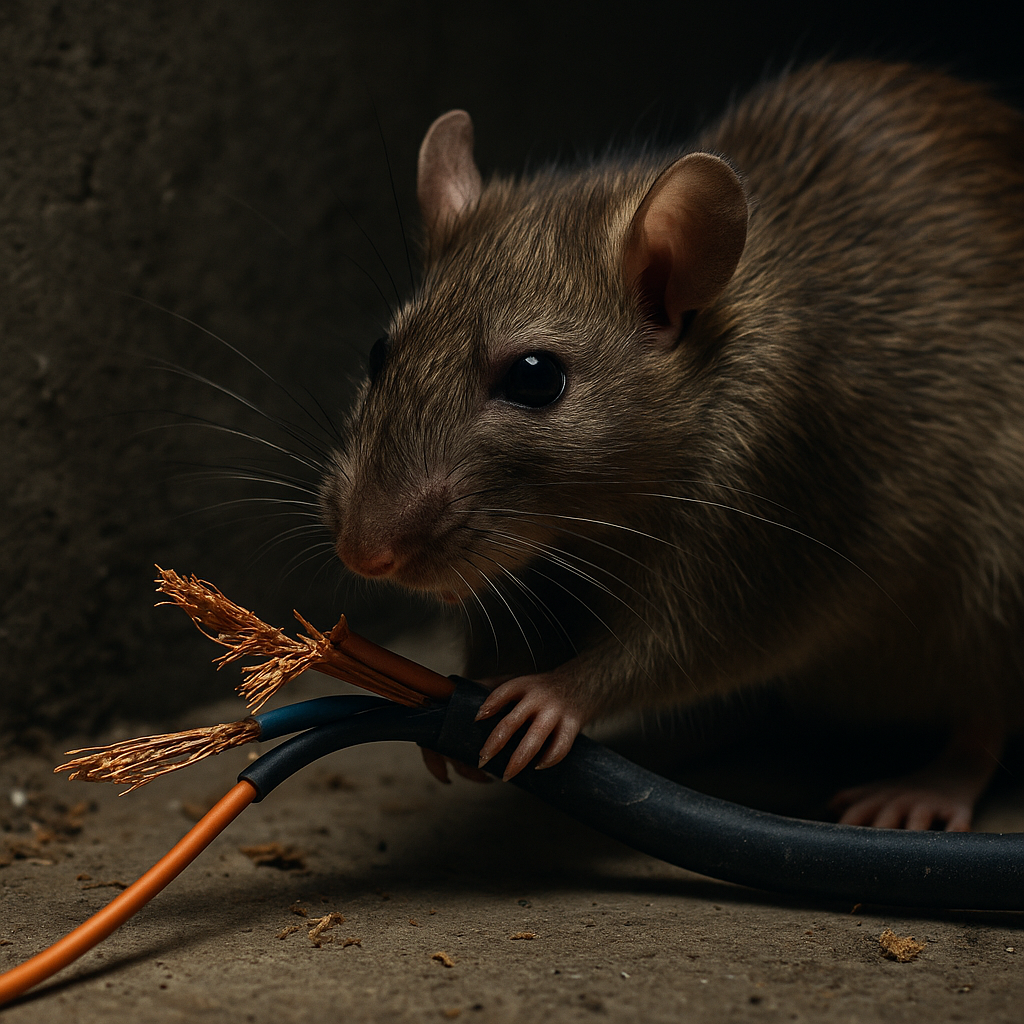A Good Pest Insider Guide
Signs of Rodents in Walls or Attics (And How to Get Them Out)
Learn to identify the subtle clues of a hidden infestation and understand the steps for effective rodent removal from your home’s most vulnerable spaces.
There are few things more unsettling than the thought of rodents living secretly within your home. The pitter-patter of tiny feet shouldn’t be coming from inside your walls or attic. When rodents take up residence in these hidden spaces, they aren’t just a nuisance; they’re a direct threat to your property’s structure and your family’s health. The keywords homeowners often search for in distress, like “get rid of mice in walls” or “rats in attic removal,” point to a common and serious problem.
This guide will equip you with the knowledge to detect the telltale signs of rodents in your walls and attic. We’ll explore the sounds, smells, and physical evidence they leave behind, and then walk through the essential steps for getting them out and keeping them out for good.
Listen, Look, and Smell: Telltale Signs of a Hidden Infestation
Rodents are creatures of habit and leave behind plenty of evidence of their presence. You just need to know what to look for—and listen for.
Unexplained Noises
Scratching, squeaking, gnawing, or scurrying sounds, especially at night when rodents are most active.
Droppings & Urine Stains
Finding droppings in your attic insulation or seeing small, yellowish stains on ceilings are clear indicators.
Musty Odors
A persistent, stale, ammonia-like smell that you can’t trace is often caused by hidden rodent nests and urine.
Why You Can’t Ignore Rodents in Walls and Attics
A hidden infestation is more than just a creepy inconvenience. It’s a slowly unfolding disaster for your home.

- Fire Hazard: Rodents constantly gnaw to wear down their teeth. When they chew on electrical wiring inside your walls, they create a severe fire risk.
- Structural Damage: They tunnel through insulation, reducing its effectiveness and increasing your energy bills. They also chew on wood, PVC pipes, and drywall.
- Health Risks: Rodent droppings and urine can carry dangerous diseases and allergens, which can be circulated through your home’s HVAC system.
The 3-Step Process for Rodent Removal from Attics and Walls
Removing rodents from these inaccessible areas is a challenge. A DIY approach is often ineffective and can even make the problem worse. The professional process for rodent removal from an attic or walls follows a clear, strategic path.
Identify and Assess
The first step is a thorough inspection to determine the species (rat or mouse), the size of the infestation, and, most importantly, how they are getting in. A professional will check from the foundation to the roofline for any potential entry points.
Remove the Infestation
Based on the assessment, a technician will use targeted methods to remove the active population. This almost always involves strategic trapping inside the attic or, in some cases, creating small, repairable openings in drywall to place traps directly in wall voids. As discussed in our guide on rodent treatments, using baits for enclosed spaces is risky due to potential odor from inaccessible carcasses.
Exclude and Prevent
This is the most critical step. Once the rodents are gone, all entry points must be sealed with rodent-proof materials like steel wool, hardware cloth, or specialized sealants. Without this step, a new infestation is inevitable.
Why Professional Rodent Removal is Essential for Walls and Attics

Attempting to handle a hidden infestation yourself can be frustrating and dangerous. Professionals have the tools and expertise required for these challenging situations.
- Specialized Equipment: They use inspection cameras, moisture meters, and specialized trapping tools to work effectively in tight spaces.
- Safety: Working in attics and dealing with potentially diseased rodents carries risks. Technicians have the proper personal protective equipment (PPE).
- Guaranteed Results: A reputable company won’t just remove the current problem; they’ll provide a long-term solution. Comprehensive rodent control services such as those from Swift Pest Control use an integrated approach that includes cleanup and exclusion to ensure the pests don’t return.
Frequently Asked Questions
I hear noises but can’t find any droppings. Could it still be rodents?
Yes. If the infestation is confined to your wall voids or deep in the attic, droppings may not be visible. The noises alone are a strong enough indicator to warrant a professional inspection.
Can I just use poison blocks in my attic?
This is highly discouraged. If a rodent consumes poison and dies inside a wall or in an inaccessible part of your attic, the resulting odor of decay can be overwhelming and last for weeks. Trapping is the preferred method for enclosed spaces.
Will the rodents just leave on their own?
It’s extremely unlikely. Once rodents have found a safe, warm place with access to food and water, they will stay, breed, and their population will grow until they are actively removed.
How do I clean up after a rodent infestation in my attic?
This should be done with extreme care due to health risks. Wear a respirator mask and gloves. Soiled insulation should be removed. The area should be vacuumed with a HEPA filter vacuum and then disinfected with an appropriate cleaning solution. For heavy infestations, professional remediation is the safest option.